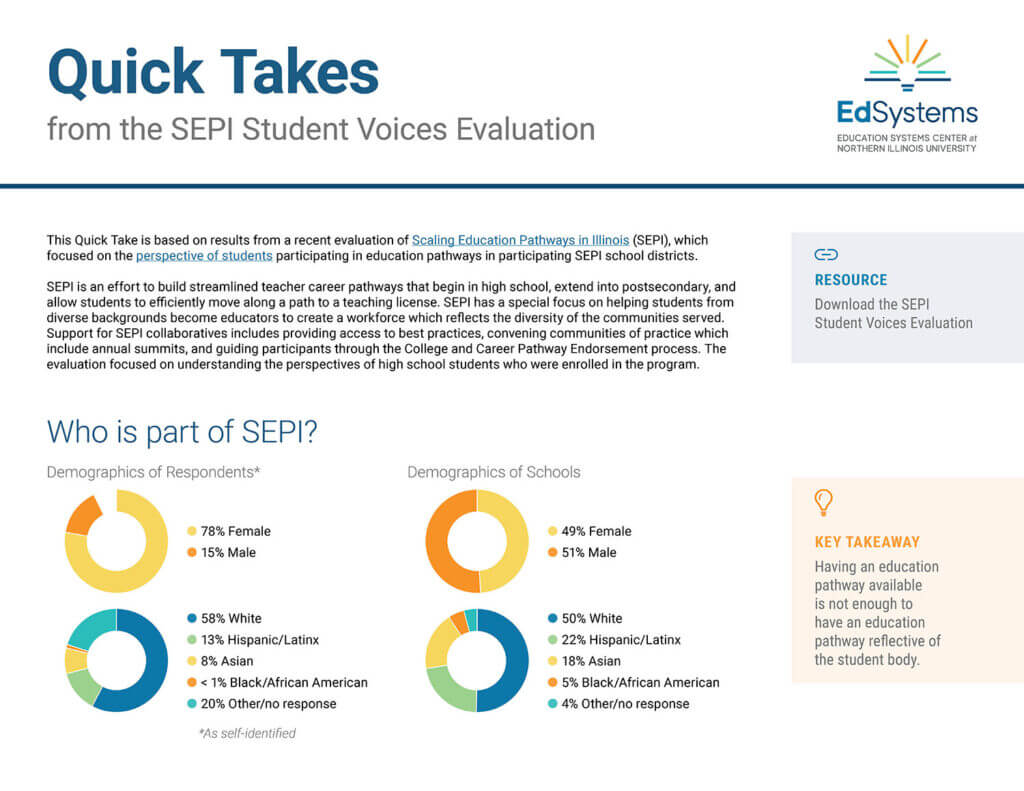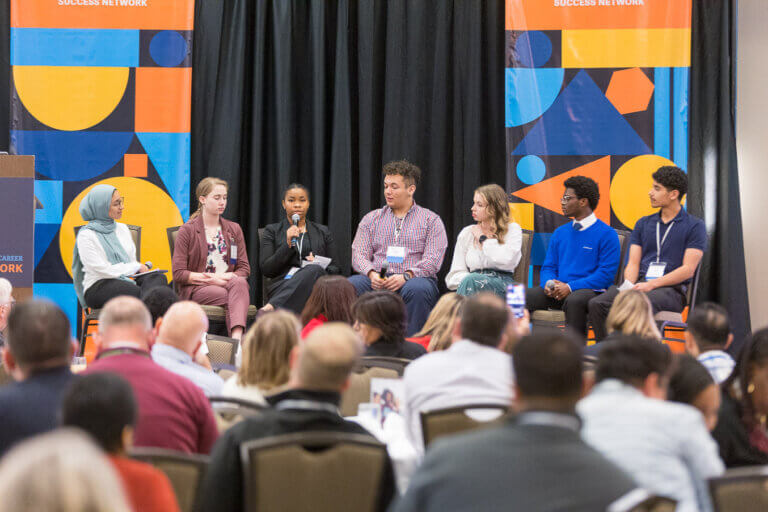What are the demographics of students who select education pathways? Why do they enter the pathway, and what do they think about their experiences in the pathway? These are just a few of the questions we unpack in the new Quick Takes from the SEPI Student Voices Evaluation.
Education Systems Center is pleased to introduce this new guide to high school students’ perceptions of and experiences in education pathways. The guide is based on the results of the Student Voices Evaluation of EdSystems’ Scaling Education Pathways in Illinois (SEPI). SEPI is an effort to build streamlined teacher career pathways that begin in high school, extend into postsecondary, and allow students to move efficiently along a path to a teaching license. The evaluation was conducted by a team of NIU education researchers and focused on understanding the perspectives of high school students who were enrolled in the program. It builds upon an Initial Analysis of SEPI and furthers the work EdSystems is doing to center student voice.
Quick Takes includes data summaries and key takeaways to better understand why students enter an education pathway, what they think about the pathway, if they find it beneficial, and what helps them to be successful.

The seven-page guide also includes students’ perceptions of teaching as a career and recommendations for education pathway designers and implementers.
The guide is useful for policymakers, secondary and postsecondary administrators and faculty, and philanthropists investing in education pathways.


